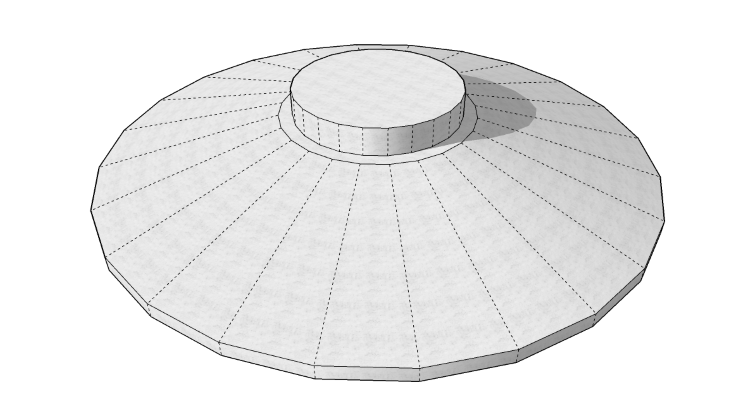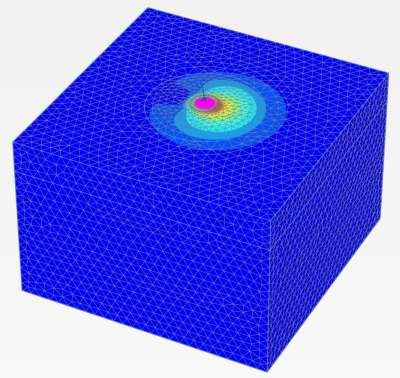
We Design Foundations Of all shapes & sizes
Wind Farm Foundation Design
Wind farm foundation design is a cornerstone of our service offerings. Our Principal Engineer, Jomaa Ben Hassine, has designed and quality-controlled the construction of thousands of Wind Turbine Generator (WTG or “windmill”) foundations across North America. He also served on the committee developing the ASCE/AWEA RP2011: Recommended Practices for Compliance of Large Land-based Wind Turbine Support Structures and as an expert on US TAG (Technical Advisory Group) to TC88 in the development of the IEC61400-6: Wind turbines – Part 6: Tower and Foundation Design Requirements (IEC 2020).
We have extensive experience designing wind turbine foundations of all types:
Gravity-base Foundations: The most common foundation system for supporting onshore wind turbines is the gravity base foundation. We pioneered the industry shift from the crude octagonal shape to the optimized round shape.
Rock-anchored foundations: For the right site geotechnical setting (good quality, shallow bedrock), rock anchored foundations are a very economical option for supporting wind turbines. However, extensive engineering experience and in-depth technical expertise are required to appreciate the design considerations for such systems and to distinguish between suitable and unsuitable sites for rock-anchored foundations. See our “To Anchor or not to Anchor.. that’s the Question” blog entry for more information.
Other innovative and proprietary foundation systems: We have helped develop proprietary foundation systems for our clients and we have other ideas currently under wraps and scheduled for publication with USPTO as utility patents.
We are intimately familiar with North American design standards and industry practices and we can identify where owner or OEM-specific requirements differ from these standards and bridge those differences to meet the standards and Owner Engineer requirements.
We can support owners and developers in producing preliminary designs of wind farm foundations suitable for pricing purposes. As the wind farm project matures and is awarded to an EPC, we work closely with the project team to produce detailed Issued-for-Construction (IFC) drawings and calculations that are signed and sealed by a licensed design professional. During all project phases, we are ready to support our clients in responding to owner engineer questions.
Wind turbine foundations typically involve large amounts of concrete and steel reinforcement. The cost of such foundations is also affected by the amount of earthwork and any necessary ground modification. Our reputation has been built on our ability to optimize such foundations without compromising their reliability.
Solar Foundation Testing & Design
At the opposite end of the size spectrum, PV tracker foundations are “tiny” but the sheer number of such foundations per utility-scale project (tens of thousands of such piles) makes them an important part of the project’s CAPEX (capital expenditures). The foundation is typically a driven pile, but other systems may be more suitable depending on the site geotechnical conditions. In all cases, optimization of the foundation system goes a long way towards reducing the project’s CAPEX. As part of the optimization exercise, our geotechnical site characterization services include performing pile load testing.
Similar to wind projects, we can support owners, developers or EPCs to produce preliminary foundations designs suitable for pricing purposes. As the project matures, we can produce detailed, issued-for-construction, foundation design drawings and calculations. During all phases, we are ready to support our client in responding to owner engineer questions.
Storage is increasingly part of a generation facility such as the one shown here where utility-scale solar and storage are part of the same, hybrid, project.
Storage System Foundation Design
We design efficient and practical foundations for Battery Energy Storage Systems (BESS). Frequently, and depending on our Client’s needs, such foundations are prototypical systems that can be modified easily to address site-specific conditions. As with all of our engineering design offerings, we issue preliminary as well as issued-for-construction documents and we support our clients with owner engineering reviews.
Transmission is the critical infrastructure that delivers power from collection points to end users. Design reliability of the lines and their support structures is paramount.
Transmission Line and Substation Foundation Design
Transmission line and substation foundations can be of any type: drilled shaft foundations, embedded pole foundations, spread footings or mat foundations. The most common, however, is an embedded pole for transmission lines and drilled shafts for heavy substation elements. We are experienced in producing designs for any of these foundation types and are familiar with the applicable standards and the analysis and design tools commonly used in this industry.




